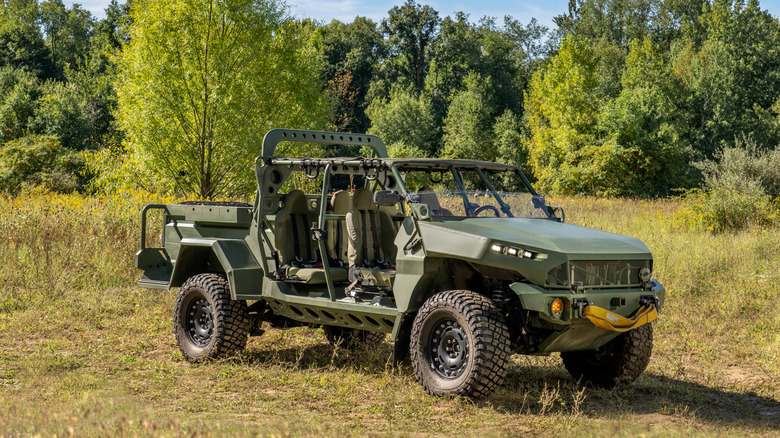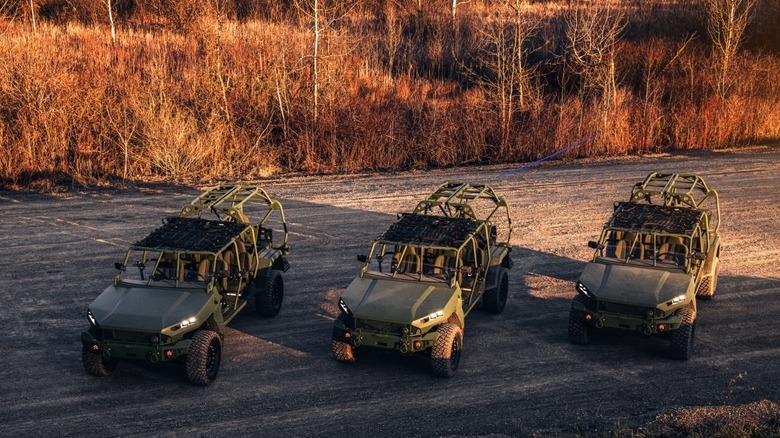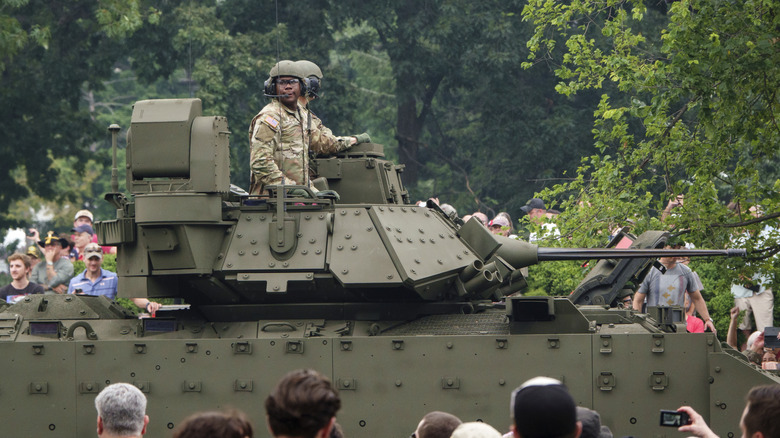Is The US Military Developing EVs To Use? The Edge They Can Provide In Battle & On Base
The United States military has been a technological trendsetter throughout its history. From GPS to the internet, the armed forces are responsible for several inventions you use every day. Today, however, the U.S. military lags the commercial sector in one major technological advancement: electric vehicles.
The push for an electrified U.S. military began in 2021, when President Biden signed EO 14057, which intended to make the federal government a leader in America's clean energy sector to spur a net-zero U.S. economy by 2050. Following the order, the U.S. Army released its climate strategy, aiming to utilize electric non-tactical vehicles by 2027, hybrid tactical vehicles by 2035, and fully electric tactical vehicles by 2050. The Navy and Air Force released similar climate strategies, each targeting net-zero emissions by 2050. Since then, technological challenges have limited the progress of all-electric tactical vehicles, although hybrids do look like a more promising option.
As of 2025, the future of these targets is uncertain under the Trump administration. Military EVs were a frequent target of President Trump on the campaign trail. Following his inauguration, the president made good on his environmental agenda by revoking EO 14057 and replacing it with a fossil fuel initiative, putting the military's green push on the back burner. However, what progress did the military make with these technologies, and what advantages might they bring?
What does electric offer?
Electric vehicles present several tactical advantages. Quieter and with lower heat signatures, EVs are ideal for reconnaissance missions and extended surveillance operations.
While the military had shown an interest in a number of tactical EV projects, none are currently slated to enter the U.S. fleet. One of the most advanced was the Army's $672 million electric Light Reconnaissance Vehicle program. However, this initiative lost steam due to budgetary constraints, plus technical and logistical hurdles, including excessive battery sizes, flammability risks of lithium-ion batteries, and impractical charging infrastructure.
While EV technology may not be advanced enough for the battlefield, several recent investments suggest the military is looking to address its technological concerns. The Army, Navy, and Air Force have all invested in making electric batteries more tactically feasible, ranging from battery treatment solutions to zinc and thermal battery alternatives.
Incorporating non-tactical EVs was recognized as a coup for on-base operations. According to Consumer Reports, EVs save $6,000 to $12,000 in fuel and maintenance costs. Extrapolating this across a fraction of the DoD's 170,000 non-tactical vehicles would save hundreds of millions. In February 2025, however, the Trump administration ordered the General Services Administration – the agency responsible for managing the majority of the federal government's non-tactical vehicles — to remove much of the government-owned EV charging infrastructure.
Pushing hybrids
It's more realistic that the military adapts hybrid technology, which offers extended operational ranges while increasing fuel efficiency. Col. William Arnold, the Army's chief of transportation, has said that hybridization is "not specifically about climate change" but a tactical choice, as modern battlefields make transporting fuel "a huge vulnerability." Reducing the Army's petroleum dependence lowers the branch's logistical exposure and enables greater mobility. Hybrids also reduce acoustic and thermal signatures, and thus increase mission capability through advanced silent drive and watch functions.
Several hybrid projects continue to gain steam in 2025. The Army is accelerating General Dynamics Land Systems' production of the hybrid-powered M-1E3 Abrams Tank. Also, there is the $1.6 billion contracts between General Dynamics Land Systems and American Rheinmetall Vehicles to develop the successor to the Bradley fighting vehicle, dubbed the XM-30. Both designs are hybrids – a winner should begin production in 2027.
The Army continues to invest in testing anti-idle kits, which hybridize traditional engines by providing an electric power source capable of running everything from a laptop to an HVAC system. This enables soldiers to continue their command, control, and communications systems while on silent watch missions. The Army's also testing integrated power kits that run high-voltage currents directly from the powertrain. Two of these kits connected produce as much power as a tactical operations center.
The Air Force has also invested heavily in hybrid technology, granting General Atomics $100 million to develop its hybrid unmanned reconnaissance drone. The Navy contracted Mack Defense to deliver prototypes of hybrid medium tactical trucks in May 2025.
With the Pentagon pondering its largest technological overhaul in 50 years, investing in EVs and hybrids can buttress its energy security. Whether one of the world's largest fossil fuel consumers can do so effectively remains to be seen.


